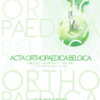Open reduction in treatment of neglected elbow dislocation in children
Elbow dislocation; children; neglected
Published online: Aug 23 2022
Abstract
Elbow dislocation in children is uncommon condition in children, it’s occurred in 3 to 6% of all elbow injuries. Only case reports and small series reported in the literature. The aim of our study is to evaluate the outcomes of open reduction of neglected elbow dislocation (NED) in children. A retrospective review of 26 neglected elbow dislocation was treated by open reduction at our institution between January 2010 and December 2018 was performed. Age, mechanism of injury, associated fracture, manipulation by bone- setters, infectious complications, were recorded. The SOFCOT criteria was used to assess the stiffness of the elbow in preoperative and in postoperative. Besides, in postoperative we used DI SCHINO Criteria to assess useful ROM and subjective criteria to evaluate pain and performance of daily activity. A total of 26 patients with a mean age of 10 years ranging from 5 to 14 years, were identified and followed for a median of 4 years postoperatively. The median duration before presentation was 5 months ranges from 22 days to 5 years. All patients except one were manipulated by bonesetters with massage and manipulation. The dislocation was postero-lateral in 15 cases (58%). 17 patients (65%) have associated fracture. 17 patients went for internal approach, 5 posterior approach, and 4 with combined internal and external approach. Reduction of the ulnar humeral joint was assisted with a lengthening of the triceps with a Speed V-Y muscle plasty in 13 patients. According to SOFCOT criteria at the last follow-up we obtained 15(58%) of minim and moderate elbow stiffness, and according to DI- SCHINO criteria at the last follow-up, 7(27 %) has a very good result, 7(27%) has a good result. The open reduction and the early rehabilitation remain the key stone of treatment of NED in children regardless the chronicity of the injury. Prevention remains the best way to improve the prognosis of neglected elbow dislocations.
